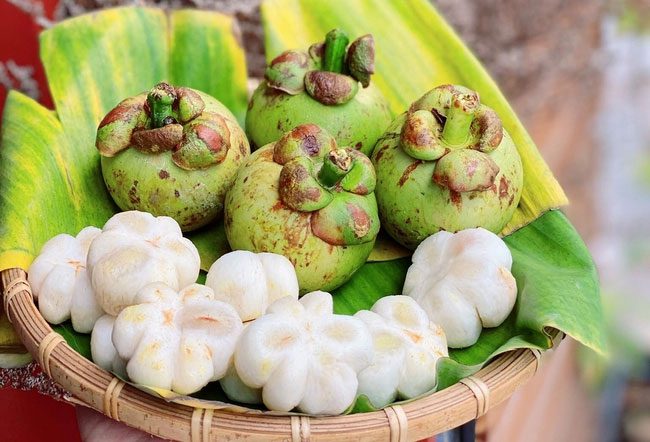Mangosteen is not only delicious but also extremely beneficial for health, containing many essential vitamins, minerals, and fiber.
Things to Know When Eating Mangosteen
Mangosteen, scientifically known as Garcinia mangostana L, is a tropical fruit primarily grown in Southeast Asia. It is currently cultivated in tropical regions of the East Indies, India, China, and Sri Lanka.
Mangosteen is not only delicious but also extremely good for health, containing a wealth of vitamins, minerals, and essential fiber. Traditional medicine uses its flesh, juice, and rind to treat chronic inflammatory disorders. Recent scientific studies have shown that this fruit possesses strong antioxidant, anti-cancer, anti-inflammatory, and antibacterial properties.

Mangosteen is a tropical fruit primarily grown in Southeast Asia.
In 100 grams of mangosteen (196 grams), there are: Calories: 60g; Carbohydrates: 14.3g; Fiber: 0.8g; Fat: 0.1g; Protein: 0.5g… The vitamins and minerals in mangosteen are vital for bodily functions, including DNA synthesis, muscle contraction, wound healing, immune response, and nerve stimulation.
Mangosteen has a spherical fruit shape, with a thick, dark red rind, a calyx at the bottom, and a stigma at the top. An average fruit contains about 6 seeds, surrounded by edible arils.
According to general practitioner Bui Dac Sang (Vietnam Academy of Science and Technology, Hanoi Oriental Medicine Association), the scientific name of mangosteen is Garcinia mangostana L., which has a slightly astringent taste. The parts used for medicinal purposes are the rind, which is effective in treating diarrhea, dysentery, and menstrual disorders…
Some Uses of Mangosteen in Medicine
1. Freshen Breath
Prepare the rind of one mangosteen, 200ml of boiling water, and a sufficient amount of honey.
Blend the flesh of the rind of one mangosteen with honey and 200ml of water, strain out the solids, and drink. This remedy will help reduce bad breath, boosting your confidence.
2. Treat Diarrhea
To treat diarrhea, take about 10 mangosteen rinds and place them in a clay pot, sealing it tightly with a banana leaf. Then boil until the water turns a deep color, and drink 3-4 cups daily.
3. Cure Dysentery
Prepare 6g of mangosteen rind, 8g of pennywort, 8g of centella, 6g of green tea, 3 slices of ginger, 8g of purslane, 8g of milkweed, 4g of dried tangerine peel, and 4g of licorice. Process all ingredients and boil them to make a drink for the day.

Mangosteen is believed to contain at least 20 Xanthones, which help reduce stress.
4. Cancer Prevention
Mangosteen is believed to contain at least 20 Xanthones, mostly found in the arils or rind of the fruit. Xanthones help reduce oxidative stress caused by free radicals. By destroying free radicals, these antioxidants protect the body from various diseases, from common colds and flu to cancer risk and arrhythmia.
How to Use: Take a pinch of dried mangosteen rind and boil it in water to drink. However, the outer rind of mangosteen is somewhat bitter, so you can combine it with coriander seeds, fennel seeds, licorice, tangerine



















































